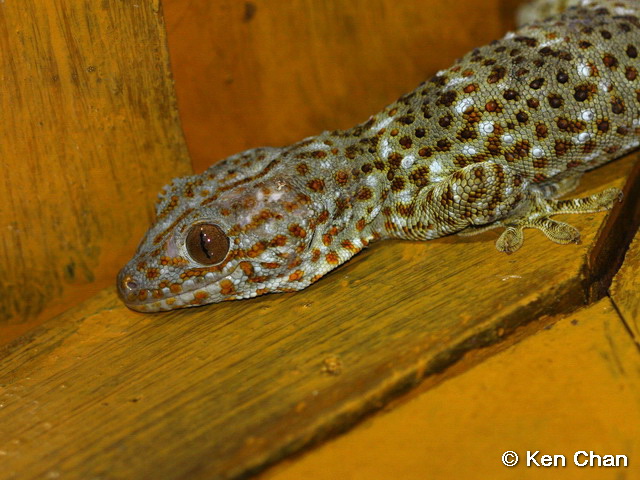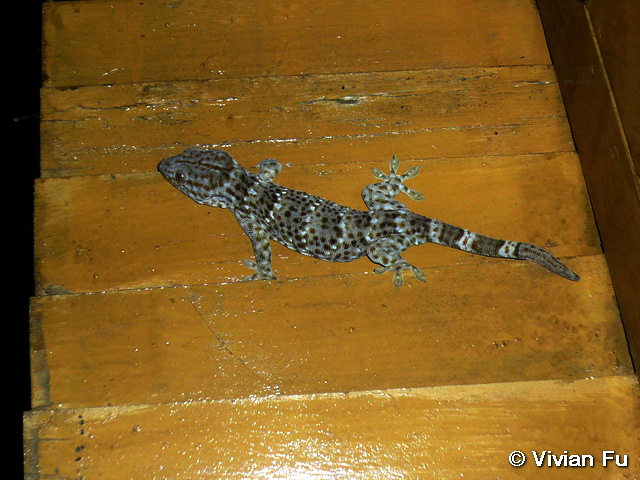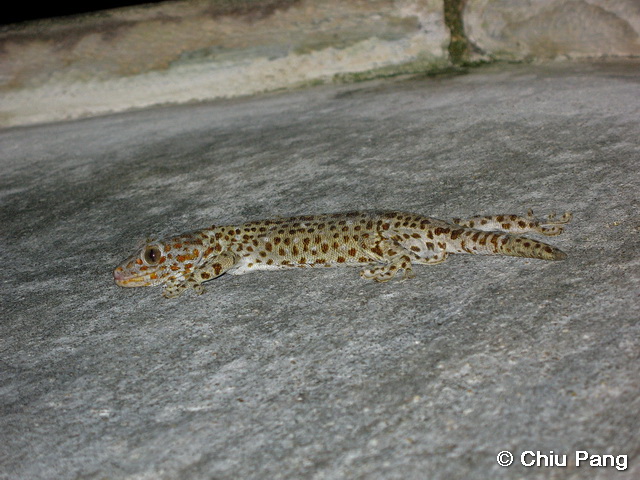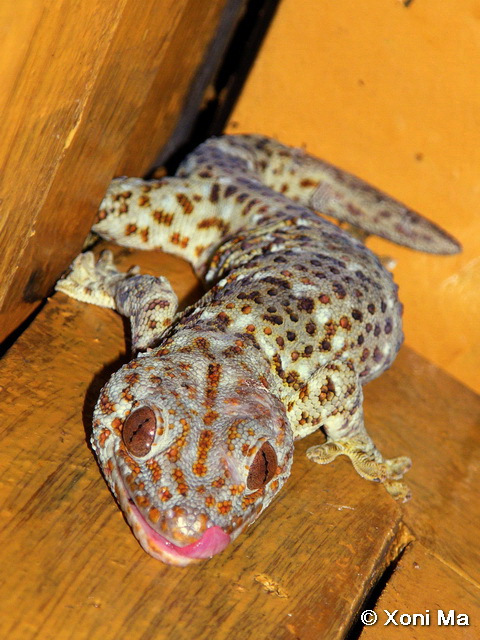Gekko gecko (Linnaeus, 1758)
Tokay Gecko 大壁虎
Suborder
Lacertilia 蜥蜴亞目
Two colour forms exist - bluish and greyish.
Abundant orange streaks and spots extending from head to tail tip.
Underside pale grey, with a series of small orange spots.
Body, tail and legs with many regular rows of tubercles.
Head large and rounded. Mouth large, black-coloured inside.
Eyes large and golden with vertical slit-shaped black pupil.
Tail thick and depressed, slightly oval is cross section. Tail tip blunt.
Adhesive discs on all digits. Digits have undivided lamellae.
Specimens seen or heard on Lantau Island and Lion Rock usually hide inside rocky cliffs or boulder piles surrounded by thick bush or forest.
However, one specimen was caught inside an old shed.
The Lantau and the Lion Rock populations are considered native.
Although reported from suburban areas (Kennedy Road, Mt. Nicholson, Shek Kong), it seems more likely that those individuals escaped from snake shops.
Both male and female are able to make calls. Calls can be heard both day and night.
Its call is a loud squawk that sounds like "Gec-ko" or "To-kay" which its common name derived from.
Some live as a group. A herd of eight has been recorded.
Is sold alive, pickled or dried in Chinese medicine and snake shops.
Specimens were seen in this same general area in 1987 near Wong Lung Hang. Another population occurs on Lion Rock.
Ranges from Bangladesh east to southern China, and south to the Philippines and Indonesia.
China Redlist: Endangered





